Having been a grateful traveler to Italy over the past years, it occurred to me recently that, despite being familiar with the saying that Rome was built on seven hills, I wasn’t at all sure that I’d even seen one. Definitely I could not name any of them. And with most trips to Italy ultimately leading to Rome, this just didn’t seem right.

Prompted to spend some time in research mode, it turns out that I have covered plenty of ground on many of the seven hills, and, if you’ve visited Rome and spent time seeing the top sites, you’ve ended up on one or more of the Caput Mundi’s seven original hills. Even if, like me, you hadn’t realized it.
Rome’s seven original hills, in alphabetical order, are: the Aventine, Caelian, Capitoline, Esquiline, Palatine, Quirinal, and Viminal. Let’s start our hill-by-hill tour in the center of the city and Rome’s birthplace, and work our way north (ish).
Palatine Hill
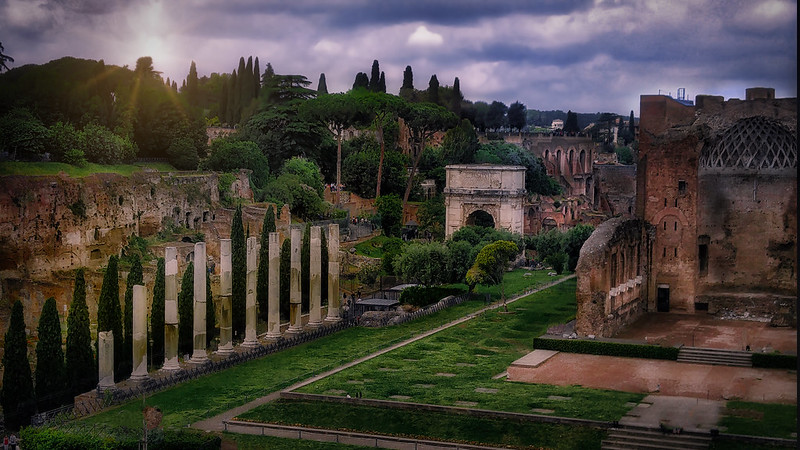
Wandering the Palatine Hill is to travel back to Imperial Rome, when the caput mundi really was the “head of the world.” Ancient Rome was born on the Palatine Hill, nestled between the Colosseum and what’s left of Circus Maximus, and the city grew out from there. Legend has it that the Palatine is where Romulus essentially staked his claim, a myth supported by the archaeological record which names the Palatine as being home to Rome’s earliest inhabitants.
Here you’ll be near the Colosseum and Forum, the Arch of Constantine and the ruins of the homes of ancient Roman emperors, along with plenty of other unbelievable ruins not named here. The entire area serves as an open-air museum of what remains of Imperial Rome.
Capitoline Hill
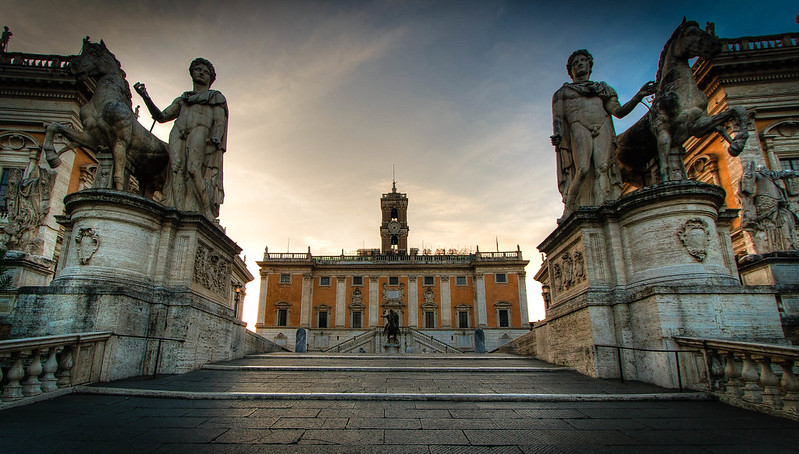
Within walking distance from the Palatine is the Capitoline Hill, known as the Campidoglio in Italian. In ancient times it was home to a number of temples, but today is widely visited for the Capitoline Museums. The gorgeous piazza and surrounding palazzi of this area were designed by Renaissance superstar Michaelangelo.
In addition to the Campidoglio, here you’ll also be near Trajan’s Forum, the Victor Emmanuel II National Monument (the “Wedding Cake”) and Piazza Venezia, where, in Palazzo Venezia overlooking the busy intersection of Via dei Fori Imperiali and Via del Corso, Mussolini had his offices and would address citizens from the balcony.
Aventine Hill

The Aventine Hill, also situated near the Palatine and the southernmost of Rome’s hills, today is primarily an upscale residential district but played interestingly into Rome’s origin story. Had Rome been founded by Remus, instead of his twin brother Romulus, the city would have grown out from the land of the Aventine Hill instead of the Palatine.
Here you’ll be near the Knights of Malta keyhole with its perfectly framed peek onto St. Peter’s Basilica, and the Giardino degli Aranci (orange garden), providing a more panoramic, tranquil view.
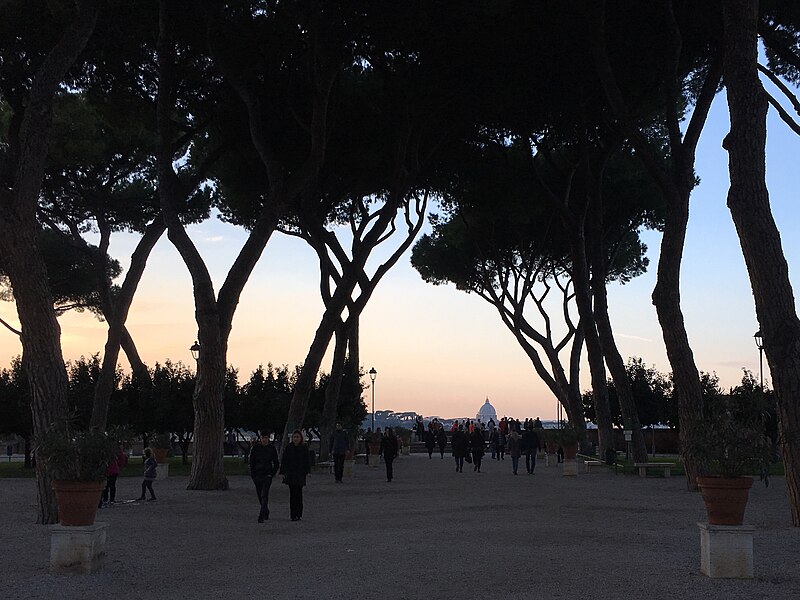
Caelian Hill

To get our bearings, let’s use the Colosseum as our reference point. It stands in the middle, with Palatine Hill to the west and Caelian Hill to the east, more or less. The photo above was taken from Circus Maximus, looking onto the Caelian Hill and one of its basilicas. Given this proximity to the Colosseum and Palatine areas, the Caelian Hill provided an upscale neighborhood in ancient days, and even said to be the birthplace of Marcus Aurelius, emperor from 161-180.
Here you’ll be near the Baths of Caracalla, Villa Celimontana and its gardens, and handful of basilicas and churches. In addition to Santi Giovanni e Paolo (above), there’s also the Basilica di Santo Stefano al Monte Celio, built around 470 and the first church in Rome of a circular design.

The Baths of Caracalla date from around 200 A.D. and were the second largest of ancient Rome’s public bathing complexes. Today, the ruins of the enormous baths are open to visitors, and serve as an open-air amphitheater to operas and other performances. Imagine sitting under the stars in a 2000+-year-old complex, enjoying a balmy Roman night and lyrical Italian!
Esquiline Hill

Rome is home to four major basilicas, and one of those, Santa Maria Maggiore, built in 432, is found on the Esquiline Hill. (The other three are Saint John in the Lateran, Saint Peter’s, and Saint Paul Outside the Walls.)
In ancient days, the Esquiline area was an residential neighborhood for the wealthy, which would explain why it became home to an exotic Hellenistic-Persian style garden in Rome (Maecenas 70-8 BC), Nero’s Golden House (Domus Aurea), built around 68 AD and later, the Baths of Trajan (dating from 104 AD).
If you find yourself with a little extra time in this area, you may want to track down the Arch of Gallienus, tucked discreetly amongst more “modern” buildings. Built during the reign of Augustus (27 BC – AD 14) as a gateway through the Servian Wall into Imperial Rome, it was later dedicated in 262 as a triumphal arch honoring Gallienus, the emperor at that time. The re-dedication was apparently an attempt to “balance negative publicity” that the emperor was experiencing due to “various setbacks suffered during his reign.” (*insert snarky comment about today’s politicians here*)

Viminal Hill

If you’ve entered or exited Rome by Termini, the main train station, then you have visited the smallest of Rome’s seven hills, the Viminal Hill. If you hear locals speaking of il viminale, likely they are referring to the Ministry of the Interior, the largest government office to occupy this part of town.
Within walking distance of Termini there is plenty to see. Ruins of the Baths of Diocletian, the largest of the Imperial bath houses dating from 298–306 AD, are open to visit. Built within the remains of the baths is the Chiesa Santa Maria degli Angeli e dei Martiri (church of Santa Maria of the Angels and Martyrs), built in 1562 following designs of Michelangelo. The church stands where the frigidarium once provided cold waters to ancient Roman bathers. Nearby are the church’s cloisters, another impressive compound of Michelangelo’s vision. These are all part of the larger complex of the National Roman Museum.
The Baths of Diocletian and the church look onto Piazza della Repubblica and its impressive Fountain of the Naiads. The fountain is connected to the Acqua Marcia aqueduct, one of the longest of eleven aqueducts which hydrated ancient Romans and their advanced city.
Quirinal Hill
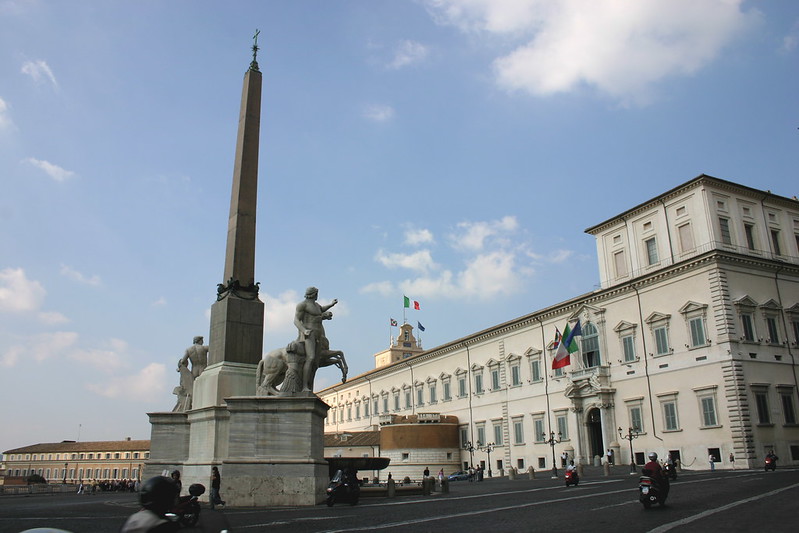
Northernmost of the hills and home to the official residence of the Italian president (currently Sergio Mattarella) is the Quirinal Hill. Similar to the vernacular used for il viminale, the term quirinale refers to the president himself.
Nearby, visitors will find themselves strolling Via del Corso, Rome’s premier shopping street, or making a wish and throwing a coin or two into the Trevi Fountain. Go beyond these sites by visiting the presidential residence Palazzo del Quirinale (reserved tickets required) and its sprawling piazza, both which are perched on a high spot of the hill known as Monte Cavallo.
The Quirinal Hill is also home to a couple of noteworthy churches, Sant’Andrea al Quirinale, designed by Gian Lorenzo Bernini and completed in 1670, and San Carlo alle Quattro Fontane (Church of Saint Charles at the Four Fountains), completed in 1638 under the direction of Francesco Borromini.
It took me a handful of visits to become attached to Rome — I had to grow into its charm. But now I understand: Rome is majestic and captivating, its offerings sprawled across the city amongst its famed seven hills, most of which I had stood on without even realizing. If Rome is on your travel list, I wish you a buon viaggio someday soon, and a successful journey to each and every one of Rome’s legendary hills.
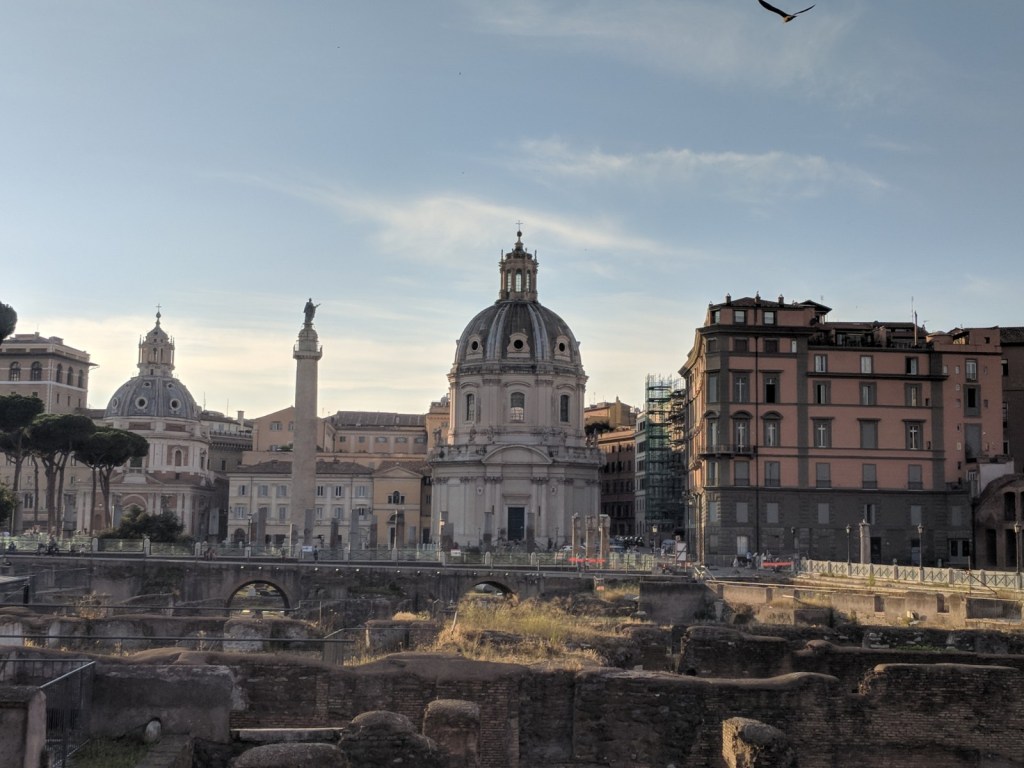
The architecture is so incredible. Great historical commentary. Thank you for the tour! 😀🙏
Hi, I’m so happy you enjoyed the article! Thank you for your kind words, stay safe and well.
You are very welcome! 🙂
Great post! Two months ago I gave a lecture on Rome. Wish I had read your blog then!
Thank you! How fun to give a talk on Rome. Blessings!
This post reminds me how much I miss Roma! Hope we can get back there soon. Ciao, Cristina
You’re right! I’ve spent months at a time in Rome and never focused on just where the seven hills were, and when I first started reading the post, I wondered how many I had visited – all of them, as it turns out! Thanks for putting it all together.
Thanks Stacy, a great post on Rome’s seven hills. And I agree, initially hard to define, but once you have your sensible walking shoes on your legs will let you know where the hills are.
Stunning history, I can never get enough of the eternal city, like a kid in a lolly-shop! Auguri cara xx
Grazie, Annmarie! I’m glad you enjoyed it and I agree with you, I can’t get enough and I hope to get back again and again. So much to discover with each visit! Un abbraccio!